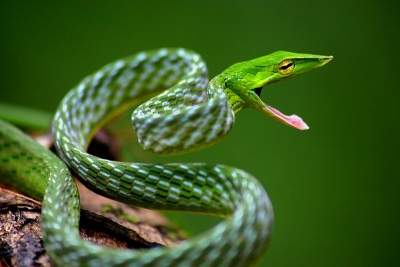What is unique about a snake's jaw?

Now and then we come across news of snakes, pythons particularly, consuming animals unbelievably huge in proportion to their own size. So how do they do it? Come, let's find out.
Snakes are found everywhere, except in the coldest regions. Which means their habitats are varied (water, soil, etc.), and so is their food. Depending on their size, these carnivores consume anything from earthworms and snails to birds, other snakes and alligators too! It's the bigger snakes such as pythons and anacondas that go after larger animals such as deer, pigs, goats, crocodiles, and rarely, unsuspecting humans too. Irrespective of whether they kill their prey with venom or by constricting them, snakes invariably swallow their food as a whole. This applies to even their largest prey, and that's where their jaws come into play.
No, the jaws don't unhinge
The myth surrounding the snake's consumption is that the reptile's jaws unhinge to help it take in very large animals. Snakes have a set of skull bones, ligaments and muscles that help them stretch their mouths very wide. In addition, flexible joints in their jaws also help with elasticity. The jaws are attached by ligaments, making them very flexible while staying connected. Since snakes do not have limbs to hold their prey, their head and jaws come in handy to draw the prey in. Their inward-facing teeth too offer grip. Usually, snakes seem to be good judges when it con to the prey size they can take in. However, there have been unfortunate (and rare) instances of judgment going horribly wrong - resulting in two deaths.
Trivia: For all the (unwarranted) fear surrounding snakes, only a miniscule number is venomous. According to the National Geographic there are more than 3,000 species of snakes in the world, but only about 7% of them "are able to kill or significantly wound a human".
Picture Credit : Google